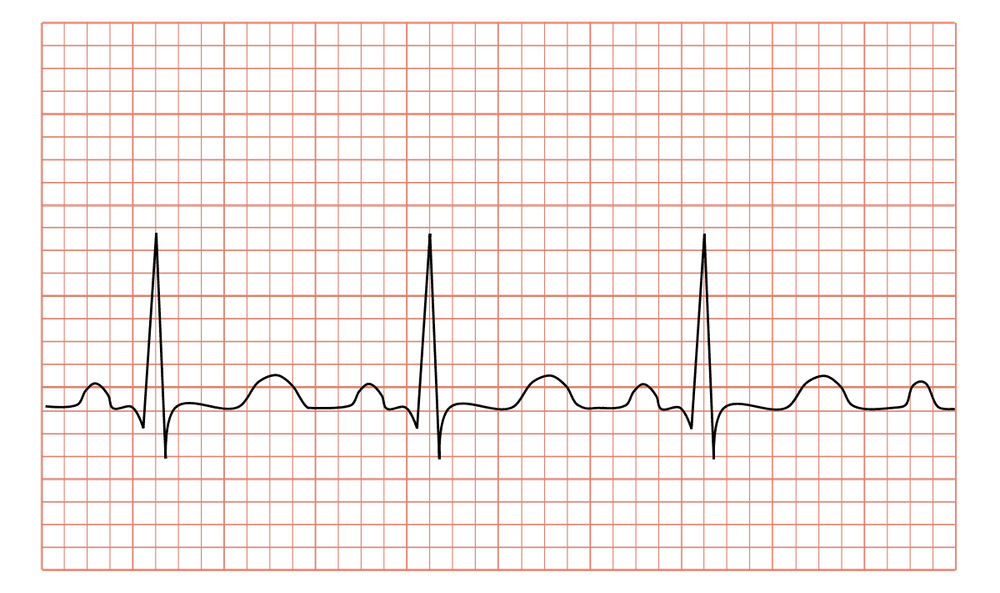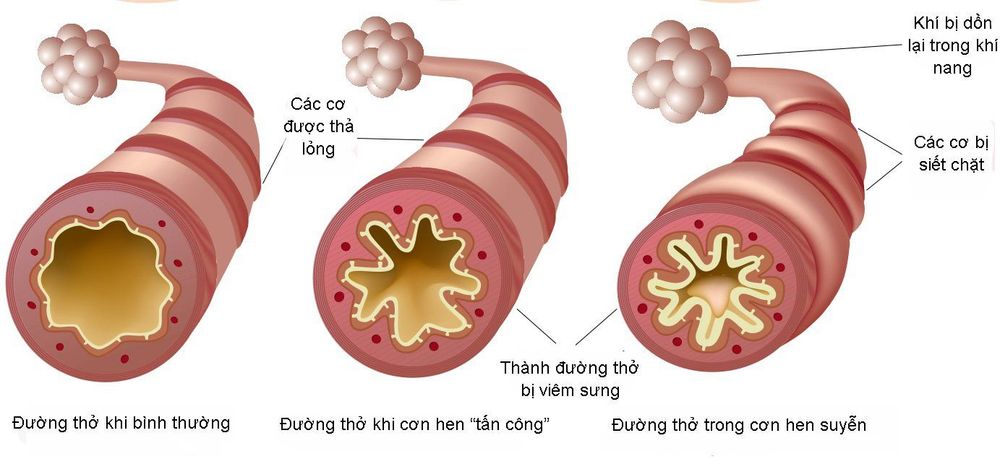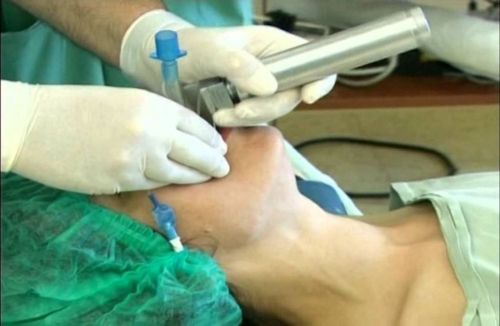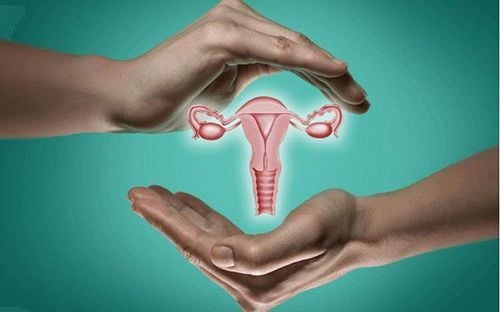This is an automatically translated article.
The article is professionally consulted by an Anesthesiologist, anesthesiologist, anesthesiologist - Department of General Surgery & Anesthesia - Vinmec Hai Phong International General Hospital.
Endotracheal anesthesia is applied during cesarean section for pregnant women with HELLP syndrome and thrombocytopenia to control the patient's breathing during and after surgery.
1. Overview of endotracheal anesthesia for cesarean section for pregnant women with HELLP . syndrome
In cesarean section for pregnant women with HELLP syndrome, the technique of general anesthesia with intubation, also known as endotracheal anesthesia, is used to control the patient's breathing during and after surgery.
Endotracheal anesthesia is indicated for pregnant women with suspected HELLP syndrome due to severe thrombocytopenia, elevated liver enzymes, and hemolysis. The mother has severe bleeding, coagulopathy, coma, fetal bradycardia.
2. What to prepare when endotracheal anesthesia for cesarean section for pregnant women with HELLP . syndrome
To perform endotracheal anesthesia for cesarean section for pregnant women with HELLP syndrome, the following facilities, machines, equipment, and medications are required:
The system includes an anesthetic machine (with breathing), oxygen hand cuffs, monitors for vital functions (such as arterial blood pressure, breathing rate, temperature, ECG, EtCO2, SpO2), suction machine, defibrillator, ... Endotracheal tube sizes for placement, laryngoscope, mask, suction tube, oropharyngeal cannula, squeeze balloon, soft mandrin, Magill pliers. Salbutamol and Lidocaine 10% spray. Other means of supporting endotracheal anesthesia for cesarean section surgery for pregnant women with HELLP syndrome in case of difficult intubation: laryngeal mask, Cook tube, flexible bronchoscope, mouth opener, set tracheostomy,...

3. Procedure for endotracheal anesthesia for cesarean section for pregnant women with HELLP . syndrome
Before performing surgery, patients need to be examined under anesthesia to promptly detect and prevent possible risks, as well as evaluate difficult intubation status. Note some possible complications for pregnant women with HELLP syndrome such as acute respiratory failure, pulmonary edema, liver and kidney failure, coma, blood clotting.
Procedures for endotracheal anesthesia for cesarean section for pregnant women with HELLP syndrome include the following steps:
Step 1: Put the patient in a supine position, at least 5 minutes before induction of anesthesia, give oxygen 100% with a dosage of 3 - 6 liters/min. Install machines to monitor and set up transmission lines. If necessary, the patient can be given sedatives from the night before surgery. Step 2: Initiation of anesthesia begins with intravenous injection (drugs, etomidate, propofol, ketamine, thiopental, ...), volatile anesthetics (sevoflurane...), analgesics (fentanyl, morphine, ...) , use muscle relaxants if necessary (rocuronium, succinylcholine, vecuronium, ...). It is necessary to ensure conditions for endotracheal intubation during cesarean section for pregnant women with HELLP syndrome (patients sleep deeply, with adequate muscle relaxation). Step 3: Carry out oral intubation as follows: (1) Open the patient's mouth, place one hand under the neck to keep the neck upright, insert the laryngoscope to the right side of the mouth, and slide the tongue. to the left side of the mouth, insert the light deeply, and at the same time use the right hand to press the cricoid cartilage to find the lid and the glottis; (2) Perform rapid induction of anesthesia and perform the Sellick maneuver when the stomach is full (as soon as the patient loses consciousness, press the cricoid cartilage 20 - 30 kg until the intubation process is complete); (3) The next step in endotracheal anesthesia for cesarean section for pregnant women with HELLP syndrome is to gently intubate the endotracheal tube through the glottis, when the endotracheal balloon passes through the vocal cords for about 2 - 3 cm then stop; (4) Gently withdraw the laryngoscope; (5) Intubation of endotracheal balloon; (6) Listen to the lungs, see the EtCO2 index to check that the endotracheal tube is in place; (7) Use adhesive tape to fix the endotracheal tube. In case, if it is necessary to avoid biting the endotracheal tube, the cannula can be placed into the patient's mouth. Note, apply difficult intubation procedure for difficult intubation cases. Step 4: The next step in anesthesia intubation for cesarean section for pregnant women with HELLP syndrome is to maintain anesthesia with anesthetics (intravenous or vapor), analgesics, muscle relaxants (if necessary). ) and control the patient's breathing with a machine or hand squeezer.

4. Monitoring during endotracheal anesthesia for cesarean section for pregnant women with HELLP . syndrome
During endotracheal anesthesia for cesarean section for pregnant women with HELLP syndrome, the following signs and indicators should be monitored:
Depth of anesthesia: Monitor blood pressure, heart rate, blood pressure, condition Sweating, tearing, BIS, MAC, Entropy (if any) ... Vital signs: Monitor blood pressure, heart rate, body temperature, EtCO2, SpO2 indicators. Monitor in case of wrong position of endotracheal tube, or blocked, folded tube. At the end of endotracheal anesthesia for cesarean section for pregnant women with HELLP syndrome, the following criteria should be met before extubation:
The patient is awake and can follow orders. Breathe spontaneously, breathe evenly, breathing rate is within normal limits. Blood pressure and pulse are stable. Body temperature over 35 degrees Celsius. Raise head >5 seconds, TOF index >0.9 (if any). The patient had no complications from anesthesia and surgery.

5. Management of complications after endotracheal anesthesia cesarean section for pregnant women with HELLP . syndrome
During endotracheal anesthesia, cesarean section surgery for pregnant women with HELLP syndrome may occur some complications that need to be treated as follows:
Gastric reflux in airway: When digestive juices are detected in In the oral cavity and airway, immediately drain the fluid, place the patient in a low lying position and tilt the head to the side. Rapidly intubate the endotracheal tube and remove all fluid from the airway. Monitor patients for lung infections after surgery. Hemodynamic disorders: Depending on the cause and symptoms such as arrhythmia, increase or decrease in blood pressure, ... will be treated appropriately. Difficult intubation during cesarean section anesthesia for pregnant women with HELLP syndrome: Switch to difficult intubation procedure or proceed to another method of anesthesia. Misplaced endotracheal tube into the stomach: Re-intubate the endotracheal tube when misplaced with symptoms of auscultation of the lungs without alveolar murmurs, no measurement of EtCO2. Constriction of the larynx, trachea, bronchi: Complications in endotracheal anesthesia during cesarean section for pregnant women with HELLP syndrome may cause difficulty or inability to ventilate, at this time there will be a crackling sound or a crackling sound in the lungs. It is also possible that the lungs are mute. For management, it is necessary to provide adequate oxygen, and at the same time give sleeping pills and muscle relaxants, bronchodilators and corticosteroids to ensure ventilation. In case of respiratory failure, difficult intubation procedure should be applied. Trauma in endotracheal intubation: Depending on the damage such as tooth fracture, bleeding, foreign body in the airway, ... will be treated appropriately. Respiratory complications: Find and treat the cause, ensure ventilation and provide 100% oxygen during endotracheal anesthesia, cesarean section for pregnant women with HELLP syndrome causing respiratory complications such as endotracheal tubes folded, retracted or pushed deep into one lung, opened or collapsed the respiratory system, the oxygen is exhausted, the effect of soda is gone, causing hypoxia. Complications after extubation: Depending on the cause, choose appropriate management when symptoms appear after extubation such as respiratory failure, hoarseness, sore throat, laryngospasm, gas trachea, bronchi, laryngotracheal and tracheal stenosis, upper respiratory tract infection.

6. Requirements to be noted when performing endotracheal anesthesia for cesarean section for pregnant women with HELLP syndrome
When performing endotracheal anesthesia for cesarean section for pregnant women with HELLP syndrome, the following requirements should be kept in mind:
Prepare and always have the means and methods of intubation difficult due to airway edema In pregnant women with HELLP syndrome, there is an increased incidence of difficult intubation. Endotracheal intubation in women with HELLP syndrome may increase the risk of intracerebral hemorrhage, which increases blood pressure. For management, labetalol and nicardipine can be administered intravenously to keep systolic blood pressure at 140/90 mmHg. The dose of muscle relaxants needs to be reduced because of the magnesium sulfate interaction with the muscle relaxant. Infusion of blood products such as (frozen plasma, cryoprecipitate, platelets) in severe coagulopathy. Endotracheal anesthesia for cesarean section for pregnant women with HELLP syndrome should be aware of and prevent the risks associated with the syndrome.
Vinmec International General Hospital has applied endotracheal anesthesia technique in examination, diagnosis and treatment of many diseases. The procedure of endotracheal anesthesia at Vinmec is carried out methodically and according to standard procedures by a team of highly skilled doctors and modern machinery. As a result, complications after anesthesia and surgery are always minimized to the maximum extent.
If you need medical examination by modern and highly effective methods at Vinmec, please register for examination HERE.













